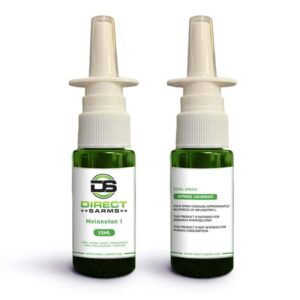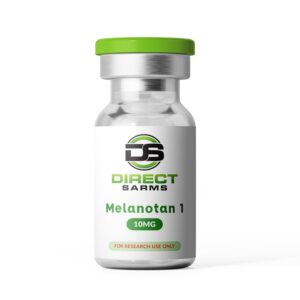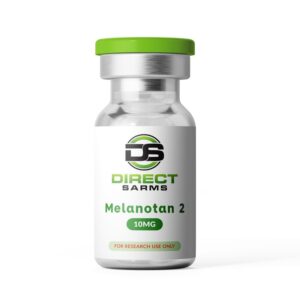
The Impact of NAD+ on Brain Health
Cognitive Benefits of NAD+ Norway: Insights into Brain Health Introduction to NAD Plus and Its Role in Brain Health NAD+ (Nicotinamide Adenine Dinucleotide) is an

MT-1 and MT-2 can provide tanning effects that boost confidence for many individuals. People with naturally tanned skin often feel more attractive. However, achieving such a tan is challenging. Although tanning through exposure to UV rays is free and effective, it requires time, patience, and dedication. A single session is not enough to guarantee a desirable tan.
In evaluating Melanotan I (MT-1) and Melanotan II (MT-2) for optimal tanning outcomes, it’s crucial to consider the distinct profiles of these synthetic peptides. Both emulate the natural alpha-melanocyte-stimulating hormone (α-MSH)’s function in promoting melanin production.
Norway Direct Sarms features an array of melanotan products, such as vials, nasal sprays, and pre-mixed pens, catering to the diverse needs of researchers.
MT-1, which specifically targets MC1R, minimizes side effects due to its targeted action, offering a safer but slower approach to tanning. Conversely, MT-2, activating a broader range of melanocortin receptors, ensures a faster and more pronounced tan but at the expense of higher side effect risks, including increased libido and nausea.
The debate over MT-1 and MT-2 centers on weighing these differing safety and efficacy aspects to identify the suitable tanning peptide, factoring in individual health considerations and tanning goals.
Pros of MT-1:
Cons of MT-1:
Pros of MT-2:
Cons of MT-2:
In the search for alternatives to traditional UV-based tanning, which poses a risk of skin cancer and various skin conditions, Melanotan I (MT-1) and Melanotan II (MT-2) have captured the interest of the scientific community. These synthetic peptides, which mimic the naturally occurring alpha-melanocyte-stimulating hormone, effectively stimulate melanin production, offering a tanning effect similar to that of UV exposure but without the need for direct sunlight.
However, recent research has raised concerns about MT-2, linking it to a range of significant side effects such as spontaneous erections, increased libido, heart palpitations, and high blood pressure.
On the other hand, MT-1 is associated with a much lower risk of adverse effects, suggesting it might be a safer option for those looking to increase melanin production. Although the prospect of a long-lasting, natural-looking tan offered by these peptides is attractive, their use—available via injections or nasal sprays—carries certain risks.
Reported issues include not only cardiovascular stress but also acne, eye disorders, gastrointestinal disturbances, and the danger of spreading blood-borne infections like HIV and hepatitis through the sharing of needles.
This highlights the urgent need for further research to fully assess the safety, effectiveness, and overall risk profile of MT-1 and MT-2 as tanning supplements.
In conclusion, while Melanotan I (MT-1) and Melanotan II (MT-2) present intriguing alternatives to UV-based tanning with their ability to stimulate melanin production, the safety and efficacy of these synthetic peptides remain subjects of debate within the scientific community. MT-1 appears to offer a safer profile with fewer side effects, whereas MT-2 provides more rapid and intense tanning results but comes with a higher risk of adverse reactions.
It’s critical for potential users to be aware that neither MT-1 nor MT-2 has been approved by the Food and Drug Administration (FDA) for tanning purposes. This lack of approval underscores the necessity for cautious consideration and comprehensive research before opting for these tanning peptides. The enticing prospect of achieving a UV-free tan should not overshadow the importance of understanding the potential health risks and the current regulatory status of these compounds.
References:
[1] Z.Abdel-Malek, V.B.Swope et al (1995) Mitogenic and melanogenic stimulation of normal human melanocytes by melanotropic peptides – Proceedings of the National Academy of Sciences U S A. 1995 Feb 28;92(5):1789-93.
ALL CONTENT AND PRODUCT INFORMATION AVAILABLE ON THIS WEBSITE IS FOR EDUCATIONAL PURPOSES ONLY.
DISCLAIMER: These products are intended solely as a research chemical only. This classification allows for their use only for research development and laboratory studies. The information available on our Norway Direct Sarms website is provided for educational purposes only. These products are not for human or animal use or consumption in any manner. Handling of these products should be limited to suitably qualified professionals. They are not to be classified as a drug, food, cosmetic, or medicinal product and must not be mislabelled or used as such.





Cognitive Benefits of NAD+ Norway: Insights into Brain Health Introduction to NAD Plus and Its Role in Brain Health NAD+ (Nicotinamide Adenine Dinucleotide) is an

Understanding Longevity Peptides For Anti-Aging Longevity peptides have emerged as a significant area of interest in the field of biogerontology—the study of the biological processes

Worldwide
shipping

Visa/Mastercard/Zelle
Cryptocurrency /Transfers

Safe and Secure Shopping

We Distribute
From

YOU MUST BE OVER 21 YEARS IN ORDER TO USE THIS WEBSITE. All of the products are to be handled only by properly trained and qualified LABORATORY or RESEARCH professionals.